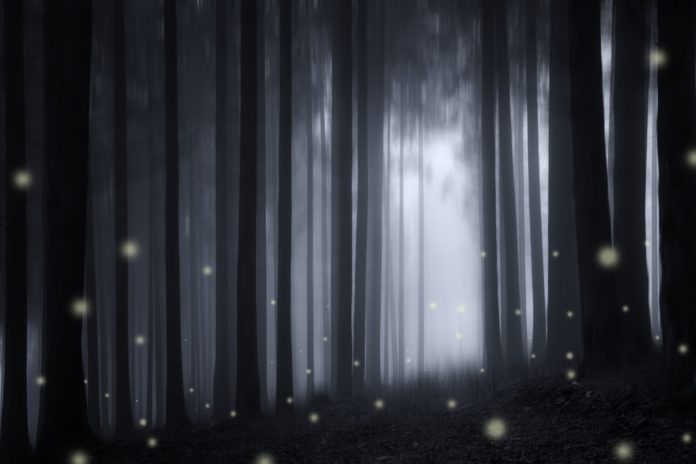October means Halloween, and there is a lot of mythological folklore to choose from. But I find most of the traditional Halloween beasties somewhat clichéd, so I picked something a little more obscure. This month, we’re delving into the folklore behind the will o’ the wisp.
Will o’ the wisps are glowing lights that appear in the night in bogs or marshes. While it used to be regarded as a supernatural phenomenon, nowadays it has been explained that the lights seen are actually ignited gasses that are naturally released through the decomposition that takes place in the ecosystem. But prior to this scientific knowledge, there are many stories trying to explain these lights and the people’s disappearances that seem connected to them.
The “wisp” part in “will o’ the wisp” was another name for a type of torch. So will o’ the wisp means “Will of the Torch”. Jack o’ lantern used to be another name that mean the same thing (Jack of the Lantern), but now, of course, jack o’ lanterns refer to the carved pumpkins that we put out on Halloween. The will o’ the wisp also has many other names, depending where you are in the English-speaking world. In the Scottish Highlands, it’s referred to as a Spunkie, and as a Hinkypunk in Southwest England—which was popularized by J. K. Rowling in her Harry Potter series. In Welsh folklore, it’s referred to as “faerie’s fire” and is held in the hand of a creature called a púca or puck.1 It was referred to as “pixie light” in Devon and Cornwall, a light held in the hand of a pixie. And in other parts of England, the light was thought to be held in the hand of a small goblin-like creature called a hob, and so the will o’ the wisp is also sometimes called a hobby lantern. It is also commonly referred to by its Latin term, ignis fatuus—fool’s fire.
So, what do these lights do? Well, as far as I can tell…nothing. The only time it seems to actually cause problems is if you follow them. The story often goes as follows:
A guy named Jack or Will is walking in the night. In the distance he sees a light and begins to follow it, thinking that it might lead him to…civilization? (The stories don’t specify why they follow the light, but they inevitably do.) After following the light for some time, it goes out (typically accompanied with malicious cackling), leaving Jack/Will lost in the dark in a usually dangerous place. He is never heard from again.
But what are the will o’ the wisps and where did they come from? Sometimes they are thought to be the wandering souls of people who died unbaptised.2 One story from Shropshire goes that a wicked man named Will died and at the gates of Heaven, St. Peter decided to give him a second chance to turn his life around. But instead of cleaning up his act, the man continues to live a wicked life, so he ends up wandering the earth. The devil gives him a glowing coal to warm himself, and he becomes the will o’ the wisp and continues his bad behaviour by leading travellers off the paths to their deaths.3
There are will o’ the wisp sightings worldwide (because marshes can be found all over the world) and many different cultures have stories of who or what these lights are. But as a general pro-tip: don’t go following lights in dark places. Y’all gonna end up mugged.
1 Puck in Shakespeare’s A Midsummer Night’s Dream is likely meant to be a púca
2, 3 It is painfully obvious that the Catholic Church spent a number of centuries teaching theology in Latin to people who did not understand Latin. Because on a theological level, this is not how Christianity works.










